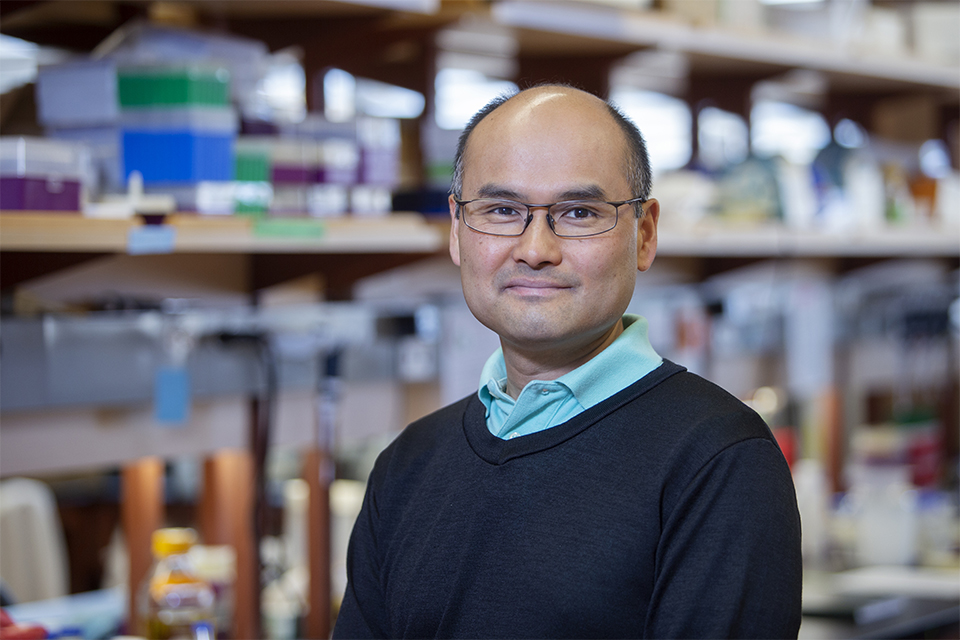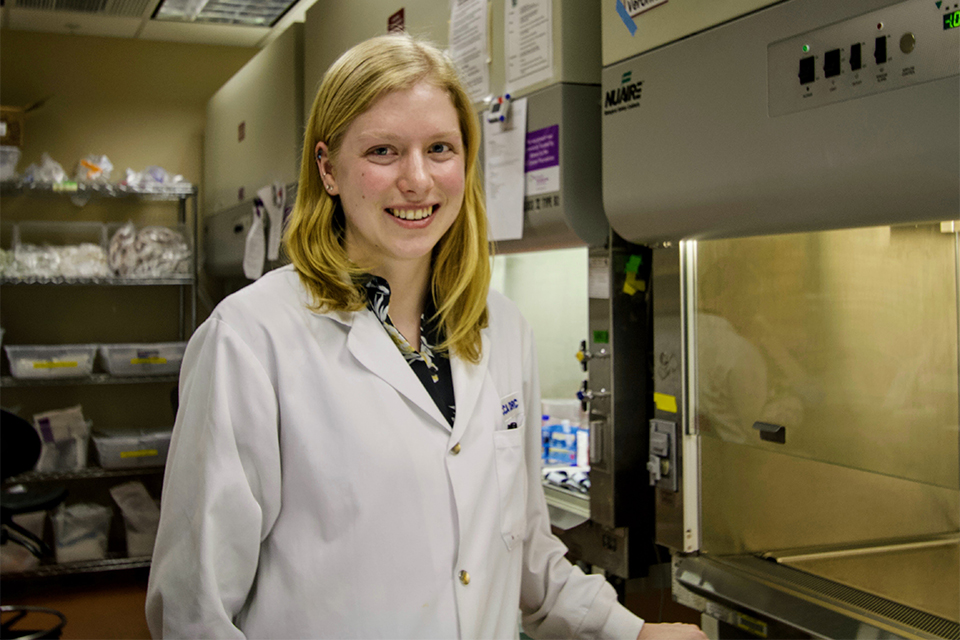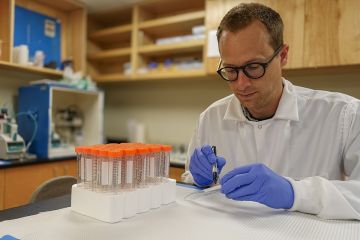Food: friend or foe in immunity’s fight against ovarian cancer
- University of Victoria

Inside the tiny micro-environment of a tumour, cancer cells and immune cells are in a battle for nutrients. University of Victoria researchers have now discovered a key culprit that will help them use gene-engineering technology to help harness the body’s immune system to fight ovarian cancer.
In a study published in Science Advances, researchers discovered how to identify the cancer cell byproducts—or metabolites—that effectively cripple the body’s T cells, the type of immune cell critical for killing cancer. It is the first time that researchers have “mapped the metabolome in human ovarian cancer,” says Marisa Kilgour, lead author and PhD student in UVic’s biochemistry and microbiology department. By mapping the metabolome, researchers have a vital snapshot of the metabolites present within key cells in the tumour microenvironment.
This is the first time we have a clear picture of the relationship between the immune and tumour cells in ovarian cancer. This could be a game-changer in how we can design our immune system to fight the disease.
—Marisa Kilgour, lead author and UVic PhD student
Kilgour is supervised by Julian J. Lum, a UVic associate professor and senior scientist at BC Cancer’s Deeley Research Centre in Victoria.
Immunotherapy involves manipulating the body’s immune system to treat disease. It has been very successful at treating some cancer types, but not ovarian cancer. One reason is that tumour cells create a battleground by competing with T cells for nutrients, while also producing metabolites that suppress the body’s immune system.
Kilgour and research partners across Canada and the United States developed a novel method to profile the metabolism of cancer cells and T cells from the tumours of ovarian cancer patients. Specifically, the researchers discovered the metabolite known as 1-methylnicotinamide (1-MNA) effectively turns off the anti-cancer function of T cells, thereby crippling the immune system. This provides metabolic targets to improve immune-based therapies for ovarian cancer.

“In this scenario, scientists can engineer T cells to do two things: they can continue to be in a ‘nutritional arms race’ by consuming more to grow stronger to fight the cancer cells. Or scientists can engineer the T cells to put up shields to protect themselves against metabolites like 1-MNA, which is the immunotherapy approach,” says Lum.
Researchers can reprogram T cells using CRISPR-Cas9 gene-engineering, a technology that was awarded the 2020 Nobel Prize in chemistry. This technique has been successfully applied to restoring the function of blood cells in two disorders: sickle cell anemia and beta-thalessemia. Scientists can use this same approach to reprogram T cells as form of immunotherapy, adds Lum.
This breakthrough study also opens the door to future discoveries that Lum hopes will illuminate the broader societal changes required in human dietary behaviour to prevent disease. Changes in diet impact metabolism and immune system function, which directs how the human body can respond to and fight serious illness like cancer, he adds.
“How does our diet affect our immune system’s response to cancer? Are we eating the wrong things? We need to deeply probe this area at a molecular level to one day change human dietary behaviour,” says Lum.
The research is supported by the Canadian Institutes for Health Research and the U.S. Department of Defence.
Photos
In this story
Keywords: research, funding, biochemistry, chemistry
People: Julian Lum, Marisa Kilgour







